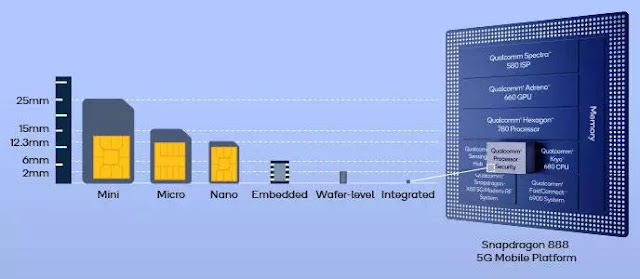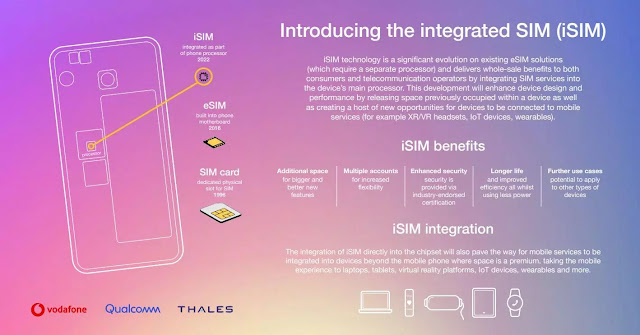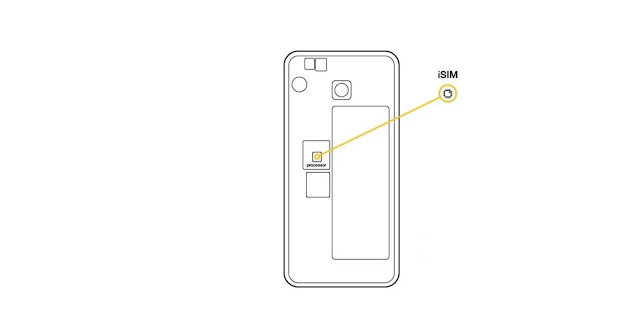Vodafone, Qualcomm Technologies Inc, and Thales have teamed together to show a working smartphone using iSIM (based on the ieUICC[1] GSMA specification), a novel technology that allows a SIM card’s functions to be incorporated into a device’s main CPU. This achievement paves the path for the technology’s commercialization, which might result in a slew of new products that employ iSIM to connect to mobile services.
iSIM technology is a significant advancement over existing eSIM solutions, providing wholesale benefits to both consumers and telecom operators. It also paves the way for mobile services to be integrated into devices other than mobile phones, such as laptops, tablets, virtual reality platforms, IoT devices, wearables, and more. The iSIM is embedded into the device’s application processor, providing a number of advantages:
⚈By freeing space formerly occupied within a device, it simplifies and improves device design and performance.
⚈SIM functionality is combined with other key components like the GPU, CPU, and modem in the device’s primary chipset.
⚈Allows the operator to provision SIMs remotely using the current eSIM infrastructure.
⚈Allows a variety of devices that previously couldn’t have SIM capability to connect to mobile services.
A proof-of-concept (POC) demonstration took place in Europe, one of the regions with the highest smartphone penetration in the world. The POC illustrates the business readiness and efficiency of technology running on existing infrastructure, leveraging Vodafone’s advanced networking capabilities. In the demonstration, the proof-of-concept device used on Vodafone’s network was based on the Samsung Galaxy Z Flip3 5G powered by a Snapdragon 888 5G mobile platform, which incorporates a Qualcomm secure processing unit running the system operating Thales.
purpose of this demonstration. the proof of concept took place in Samsung’s R&D labs using Vodafone’s advanced remote management platform. Alex FromentCurtil, Chief Commercial Officer of Vodafone, said: “Our goal is to create a world where every device connects seamlessly and where the customer has complete control. iSIM, coupled with our remote management platform, is an important step in this direction, allowing devices to be connected without a physical SIM or dedicated chip, making connectivity to many objects – the promise of the connected IoT world – a reality. From a carrier perspective, they help eliminate the need for separate SIM cards and the extra plastic that consumes. We will continue to work closely with Qualcomm Technologies and Thales to develop new applications for this technology and accelerate its commercialization.
“iSIM solutions offer great opportunities to MNOs, free up valuable space in devices for OEMs, and provide flexibility for device users to benefit from the full potential of 5G networks and experiences across a wide range of device categories,” said Enrico Salvatori, senior vice president and president, Europe/MEA, Qualcomm Europe, Inc. Smartphones, mobile PCs, VR/XR headsets, and industrial IoT are just a few of the domains that will gain the most from iSIM technology. We are able to provide extra support for OEMs on our Snapdragon platform by incorporating the iSIM technology into the SoC.”
ieUICC/iSIM technology information
The Integrated Embedded Universal Integrated Circuit Card (ieUICC) takes one step farther than the eSIM by being built into a system on a chip’s silicon architecture (SoC). It can have comparable functionality to a standalone SIM card (with just one permanent subscription) or be more flexible, like the eUICC (where the necessary profiles can be uploaded over the air (OTA) during the device lifespan).







